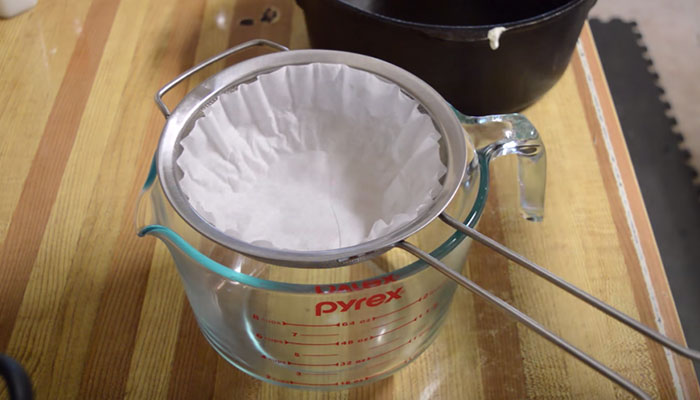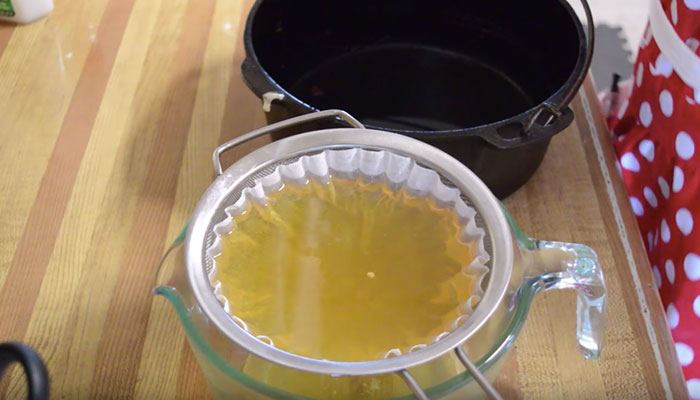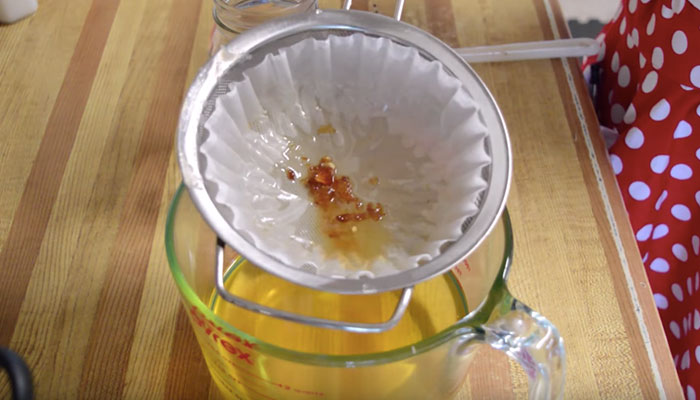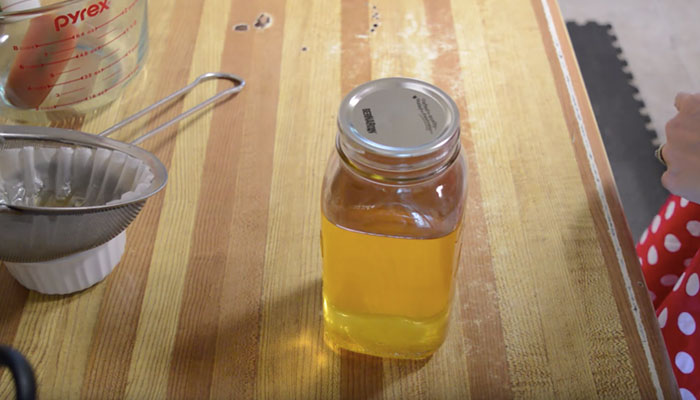Many people think that storing oil is as simple as keeping it in a bottle and tightly sealing the cap. However, the proper storage of cooking oil goes beyond that.
Improper storage can cause the oil to develop an unpleasant odor and become rancid, potentially leading to digestive issues for you and your family. Therefore, it is crucial never to neglect proper storage practices, especially when it comes to used oil.
1. Storing New Cooking Oil
Storing new cooking oil is relatively straightforward, and most homemakers are already familiar with the process.
– Always tightly seal the cooking oil bottle to prevent moisture and dust from getting in.
– Never store cooking oil in metal containers or wet glass bottles as the water could be a source of bacteria, leading to oil decomposition and spoilage. If you buy a large bottle of oil and want to transfer it to a smaller container, only use clean, dry glass or plastic bottles.
– Some types of cooking oils should be stored in the refrigerator after opening, as advised by the manufacturer.
– Keep the oil in a cool, dry place, away from direct sunlight or areas with high humidity.
– Always pay attention to the instructions on the oil packaging for the best storage practices.

2. Storing Used Cooking Oil
Experts advise against using cooking oil more than once. However, if you find yourself wanting to “save” oil after deep-frying or using a large amount of oil in a dish, there is a proper way to store it.
Follow these steps to store used cooking oil correctly:
Step 1: Prepare a strainer, a glass bowl or container, and a suitable oil storage container. As mentioned, oil should only be stored in glass or plastic containers. Do not pour the used oil back into the original bottle.

Step 2: Allow the oil to cool completely. Place the strainer over the glass bowl and line it with a paper towel to absorb any remaining oil.

This step ensures that any food particles left in the oil are removed, making it cleaner and safer for the next use.

Step 3: Once the oil has completely drained, you can repeat the process if you want to be thorough. Then, pour the oil into a clean, dry bottle, seal it tightly, and store it in a cool, dry place.

3. Disposing of Used Cooking Oil
When it comes to disposing of used cooking oil, especially after multiple uses or if it has expired, never pour it directly down the drain or into a sewer.
Oil and fat can solidify and build up over time, leading to clogged pipes and costly plumbing issues. To avoid this, there are two recommended ways to dispose of used cooking oil:
Method 1: Pour the used oil into a plastic bottle or bag and place it in the trash for disposal by sanitation workers. Alternatively, you can contact a used cooking oil collection service, and they will come to pick up your used oil.
Some collection centers have the technology to convert used oil into Biodiesel, an industrial fuel. Others even use the collected oil to make soap!
Method 2: Build an oil storage tank and have it periodically pumped out by a professional oil collection service. This method is commonly used in restaurants, hotels, and other commercial establishments that use large quantities of oil daily and is now also adopted by many households.
Following these guidelines will help protect your family’s health and save you from potential plumbing headaches and expenses.
For more useful tips and tricks, visit our website.
Tips for Disposing of Excess Cooking Oil
Have you ever been left with excess cooking oil after a meal and been unsure of how to dispose it properly? Well, it turns out pouring it down the drain or flushing it down the toilet is not the right way to go about it as this can cause blockages in the pipes as well as attract a range of unpleasant pests. To help you with this issue, here are some proper methods for disposing of your excess cooking oil.




































